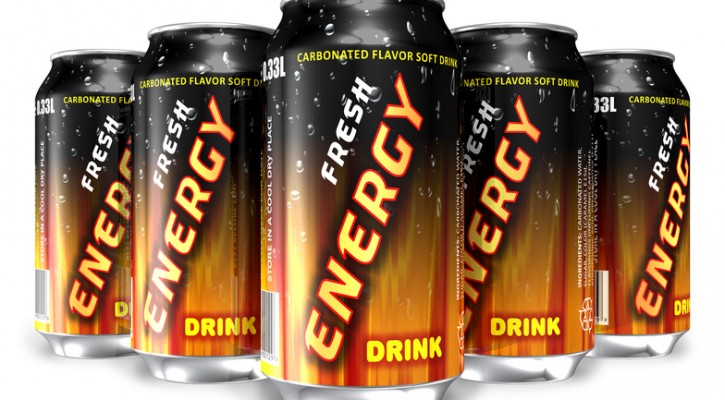Tag Archive: risks of drowsy driving

The Effects of Energy Drinks and Driving
December 11, 2009
There are many common misconceptions about energy drinks. Since they are marketed as supplements (and often times sold in health food stores), many people assume they are healthy. Or at the very least they assume energy drinks are not unhealthy. However, energy drinks are more harmful than many people realize. The FDA regulates how much caffeine a company can put in its soft drinks. A 12 ounce soft drink may have no more than 71 mgs of caffeine. However, many energy drink makers have found a way around these restrictions. By marketing their products as supplements, instead of soft drinks they are able to put as much caffeine as they wish into their drinks. Some energy drinks on the market have over double the amount of caffeine the FDA allows in soft drinks.
Ingesting such high amounts of caffeine causes people to go into an altered state, known as caffeine intoxication. Many characteristics of caffeine intoxication are similar to the characteristics of alcohol intoxication. People experiencing caffeine intoxication experience twitching muscles, increased irritability, and slurred speech. Additionally, people who drink energy drinks often become more willing to take risks and are more likely to become distracted. It is a recipe for disaster when a distracted, irritable person who is likely to take risks gets behind the wheel of a car.
When a person uses energy drinks to compensate for missing a good night’s sleep it becomes far more dangerous. Caffeine cannot compensate for the mental and physical alertness that a person gets from a full night of sleep. For a short time caffeine may seemingly do the trick. The effects of the caffeine in energy drinks may help mask a driver’s fatigue for a short while. However, when the effects begin to wear off drivers become increasingly more fatigued and their reaction times and ability to concentrate suffer greatly. Many people describe a crashing effect and they become more acutely aware of their mental and physical fatigue. This feeling is commonly referred to as crashing, which can be likened to the hangover people have the day after a long night of drinking.
Instead of turning to caffeine drinks for artificial energy people preparing to go on a long drive should get a full night of sleep. Additionally, they should take frequent stretch breaks, stay hydrated and take power naps if needed to ensure they are mentally and physically alert on the road.
Read more driver safety tips and dangers related to energy drinks at National Safety Commissions Driver Alerts Blog.

Teens and Drowsy Driving
October 29, 2009
Does the morning alarm seem to come too early in the day? Do you catch yourself daydreaming or having trouble focusing throughout the day? Do you find yourself rubbing your eyes or yawning? You may be suffering from Sleep Deprivation.
Being sleep deprived has a cumulative effect. The National Sleep Foundation (NSF) recommends 8.5 to 9.5 hours of sleep for teens to be fully rested and notes that other professionals recommend higher amounts. The less sleep you have, the more deprived you are and it continues to add up during the week.
Reduced amounts of rest affect judgment, performance, information processing, emotions, and reaction time. All factors which are heavily relied upon for everyday functions and especially important when operating a vehicle. The National Highway Safety Transportation Association (NHSTA) estimates falling asleep at the wheel is responsible for at least 100,000 automobile crashes, 40,000 injuries, and 1,550 fatalities nationwide per year. They have identified young people as a high risk population for drowsy driving.
Teens typically have full schedules, academic and social pressures to balance. Their body clocks change during this developmental time, calling for them to stay up later at night and wanting to sleep in longer in the morning. When teens drive without sufficient amounts of sleep, they are even more vulnerable to the dangers teen drivers already face including:
- Distracted driving due to cell phones, texting, other passengers, adjusting music and eating or drinking
- Inexperience
- Impulsive behavior, including reckless driving, tailgating and speeding
- Lack of consistent seat belt use
- Reduced visibility at dawn, dusk or night
Other risks that increase drowsiness include:
- Colds, viruses and the flu
- Many prescription and over the counter medications
- Sleep apnea
- Alcohol consumption
NHSTA has identified late night, late afternoon and morning hours between six and eight a.m. as the hours teens are most tired and in the most jeopardy. Getting enough rest and avoiding high risk behaviors at specific times help to prevent drowsy driving. Also consider asking a passenger to stay alert and share the driving responsibility.
How can you over come driving drowsy? The National Sleep Foundation has the following suggestions:
- Watch for the warning signs of fatigue
- Stop driving-pull off at the next exit, rest area or find a place to sleep for the night
- Take a nap-find a safe place to take a 15 to 20-minute nap
- Consume caffeine-the equivalent of 2 cups of coffee can increase alertness for several hours
- Try consuming caffeine before taking a short
Be safe and get some rest.
Learn more at the National Sleep Foundation (NSF). The NSF has established November 2-8 as Drowsy Driving Prevention Week.
